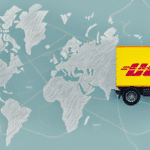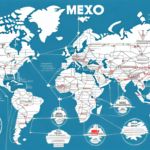Exploring the Top US Delivery Companies
In today's fast-paced world, delivery companies are indispensable for online retailers and individuals alike. The US market offers a wide range of delivery companies, each with its own strengths and weaknesses. This article explores the top US delivery companies, their services, and how they have evolved over the years to meet the demands of a rapidly changing market.
Comparing Shipping Rates and Delivery Times
One of the most critical factors in choosing a delivery service is the shipping rate and delivery time. The leading US delivery companies include UPS, FedEx, DHL, and USPS. Here's how they compare:
- USPS: Generally the most affordable option, especially for smaller packages and envelopes. Typical delivery times range from three to five business days domestically.
- FedEx: Known for expedited services with delivery options ranging from same-day to three business days. It is often the most expensive among the major carriers.
- UPS: Offers a variety of shipping options suitable for larger and heavier packages, with delivery times comparable to FedEx.
- DHL: Specializes in international shipping, providing faster delivery times for overseas packages.
The size and weight of the package also play a significant role in determining the most cost-effective and efficient carrier. Additionally, each company offers different levels of tracking and insurance options, which can impact the overall cost and reliability of the service.
Detailed Reviews of Top US Delivery Companies
UPS
UPS is renowned for its reliability, advanced tracking capabilities, and efficient logistics. It offers a broad range of services, including air, ground, and freight services, making it an excellent option for large shipments and international deliveries. Businesses with high shipping volumes often prefer UPS for its scalability and comprehensive service offerings.
FedEx
FedEx provides a wide array of services, including same-day, next-day, and two-day delivery options. It is highly regarded for its customer service and advanced tracking technologies. FedEx is a top choice for businesses requiring expedited shipping and reliable international delivery.
DHL
DHL excels in international shipping, offering premium express services tailored for global logistics. It is ideal for businesses that need timely delivery of products to a global customer base. However, DHL's coverage may be limited in some remote or rural areas within the United States.
USPS
USPS caters to both business and personal shipping needs, making it a versatile option. It is particularly cost-effective for small packages and envelopes, though it may lack the advanced tracking and expedited delivery options found in UPS and FedEx.
Advantages and Disadvantages of Each Delivery Company
- UPS:
- Advantages: Reliable, extensive tracking, suitable for large and international shipments.
- Disadvantages: Higher costs compared to USPS.
- FedEx:
- Advantages: Expedited shipping options, excellent customer service, advanced tracking.
- Disadvantages: More expensive, especially for smaller shipments.
- DHL:
- Advantages: Superior international shipping services.
- Disadvantages: Limited domestic coverage, higher costs.
- USPS:
- Advantages: Most affordable for small packages, extensive domestic network.
- Disadvantages: Slower delivery times, less comprehensive tracking.
The Impact of E-Commerce on US Delivery Companies
The rise of e-commerce has significantly influenced the growth and evolution of the US delivery industry. Online retailers like Amazon have set high standards for delivery speed and reliability, pushing delivery companies to adopt new technologies and optimize their operations.
Key impacts include:
- Same-Day Delivery: Increased demand for same-day and next-day delivery options to meet consumer expectations.
- Technological Advancements: Adoption of automation, AI, and robotics to enhance logistics and reduce delivery times.
- Environmental Sustainability: Growing demand for eco-friendly delivery options, such as electric vehicles and optimized routing to reduce carbon footprints.
Technological Innovations Shaping the Future of Delivery
Automation and Artificial Intelligence
Delivery companies are investing in automation and AI to streamline operations. For example, UPS uses AI-driven routing systems to optimize delivery paths, resulting in cost savings and increased efficiency. FedEx employs robots for package scanning and sorting, accelerating the processing times.
Drone Deliveries
Companies like Amazon are testing drone deliveries, which promise faster and more efficient service, especially in rural or hard-to-reach areas. This innovation could revolutionize the industry by reducing delivery times and operational costs.
Blockchain Technology
Blockchain is being explored to enhance supply chain transparency and security. By utilizing a decentralized ledger, companies can track packages in real-time, minimizing the risk of fraud and errors.
Customer Satisfaction and Green Shipping
Customer Satisfaction Ratings
Customer satisfaction is a crucial metric when selecting a delivery company. According to the American Customer Satisfaction Index (ACSI), UPS and FedEx rank highest in customer satisfaction, followed by USPS and DHL. Key factors include delivery speed, reliability, and customer service.
Innovations in Green Shipping
Environmental sustainability is becoming increasingly important for consumers. Delivery companies are implementing green shipping practices to reduce their carbon footprint:
- Electric and Hybrid Vehicles: UPS has introduced hybrid delivery vehicles, significantly reducing emissions and improving fuel efficiency.
- Alternative Fuels: FedEx is investing in biofuels and electric vehicles, aiming to source 30% of its jet fuel from alternative sources by 2030.
- Optimized Delivery Routes: Companies are using technology to plan efficient delivery routes, minimizing fuel consumption and reducing overall emissions.
Best Practices for Choosing the Right Delivery Company
When selecting a delivery company, businesses should consider several factors to ensure they choose the best fit for their needs:
- Shipping Volume: Assess the average shipping volume to determine which carrier offers the most cost-effective rates.
- Delivery Times: Evaluate the importance of delivery speed and choose a carrier that can meet your timelines.
- Shipping Rates: Compare rates across different carriers to find the most affordable option without compromising on quality.
- Customer Service: Ensure the carrier provides reliable customer support to handle any issues promptly.
- Technology and Tools: Look for carriers that offer real-time tracking, integration with e-commerce platforms, and other technological tools that enhance the shipping experience.
Reading online reviews and seeking recommendations from other businesses can also provide valuable insights into a carrier's performance and reliability.
Future Outlook for US Delivery Companies
The US delivery industry is poised for continued growth and innovation, driven by advancements in technology and the ongoing expansion of e-commerce. Key trends shaping the future include:
- Technological Advancements: Continued investment in AI, automation, and drone technology to enhance efficiency and reduce costs.
- Environmental Sustainability: Increased focus on green shipping practices to meet consumer demand and regulatory requirements.
- Expanding E-Commerce: As online shopping continues to grow, delivery companies will need to scale their operations to handle increasing shipping volumes.
- Competitive Landscape: Rising competition among carriers will drive improvements in service quality, pricing, and technological offerings.
However, challenges such as rising fuel costs, regulatory changes, and the need to balance speed with sustainability will require delivery companies to continually adapt and innovate.
Conclusion
The US delivery industry is diverse, with each company offering unique strengths and services. By comparing shipping rates, delivery times, customer satisfaction, and sustainability practices, businesses can make informed decisions about which delivery company best suits their needs. As technology and e-commerce continue to evolve, the top US delivery companies are set to innovate further, ensuring they meet the dynamic demands of the market.






















